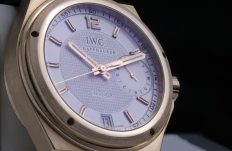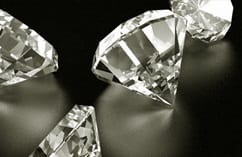White metal is becoming an increasingly popular choice in jewellery making. Not only does the classic, silvery colouring of white metal suit every skin tone, but there’s also a variety metals to choose from that will suit any budget. Unlike yellow or rose metals, which are only available in gold alloys, precious metals like white gold, platinum, palladium and stainless steel are white in appearance.
Each type of white metal has its own distinct characteristics as well as its own set of advantages and disadvantages. Understanding the qualities of each white metal will help ensure the jewelleryyou select today will bring decades of joy and satisfaction. Below, we’ll look at four of the most popular white metals — white gold, platinum, palladium, and stainless steel.
White Gold
White gold gets its silvery appearance by mixing alloys like nickel, palladium and zinc. The hue of white gold will vary depending on the types and amounts of alloys used. White gold is sometimes covered with rhodium plating to enhance its pure, bright finish. The lowest caratage of white gold legally sold in Canada is 10k, which is 41.7% pure. Fourteen-carat gold is 58.5% pure, and 18k gold is 75% pure. White gold is not available in 22k or 24k. White gold is an attractive and inexpensive alternative to platinum, but it is less durable than palladium, platinum, and steel.
Platinum
Platinum is the most expensive of the white metals. Its high price is due to its rarity — platinum is even rarer than gold. Platinum is also one of the purest metals available, with a finish that can range from a gleaming polish to a soft, satiny texture. jewellerymade with platinum will be stamped with markings of Pt, Plat, or Platinum, indicating that the piece contains 95% pure platinum.jewellerystamped with “iridplat” contains 90% pure platinum and 10% iridium. Platinum’s durability ensures minimum metal loss over a lifetime of wear. Platinum’s heavy weight, however, makes this metal unsuitable for certain types of jewellery.
Palladium
With a bright-white hue, high purity scores and incredible durability, palladium is an excellent choice for people who like the qualities of platinum, but not the price tag. Palladium offers the durability of platinum without the heavy weight, which makes this precious metal a great choice for intricate, yet solid jewellery. A marking of 950 Palladium on jewelleryindicates that the piece is 95% pure palladium mixed with 5% ruthenium.
Stainless Steel
For the ultimate in durability with minimal maintenance, stainless steel is the best choice. Unlike platinum, palladium and white gold, stainless steel isn’t a rare metal. It is, however, very pure. Stainless also steel carries the benefit of having been created in a laboratory, ensuring its quality and strength.
Stainless steel is an attractive and affordable alternative to precious white metals. Jewellery made with this industrial metal will remain scratch-free for years and will retain its gleam longer than other metals. The disadvantage of stainless steel is that it cannot be used in elaborate jewellerydesigns. Its durability can also makes resizing rings difficult.
Have more questions or interested in looking at white metal options? Contact us online, or visit us in person at 2570 Yonge Street.








